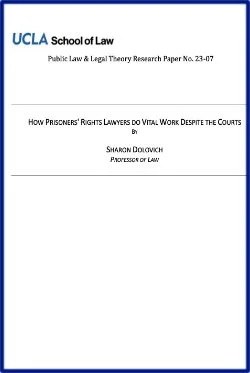By: Heather Schoenfeld , Kimberly Rhoten and Michael C. Campbell
In recent years US prisons have failed to meet legally required minimum standards of care and protection of incarcerated people. Explanations for the failure to protect prisoners in the United States focus on the effects of the Prison Litigation Reform Act (PLRA) and lack of adequate external oversight. However, very little scholarship empirically examines how different systems of accountability for prisoners’ rights work (or do not work) together. In this article, we introduce an accountability framework that helps us examine the prisoners’ rights “accountability environment” in the United States. We then compare two post-PLRA case studies of failure to protect incarcerated women from sexual assault in two different states. We find that the prisoners’ rights accountability environment is a patchwork of legal, bureaucratic, professional, and political systems. The patchwork accountability environment consists of a web of hierarchical and interdependent relationships that constrain or enable accountability. We argue that ultimately the effectiveness of prisoners’ rights accountability environments depends on whether protecting prisoners’ rights aligns with the priorities of dominant political officials. Our argument has implications for efforts to improve prison conditions and incarcerated people’s well-being.
Law & Social Inquiry Volume 00, Issue 00, 1–30, 2024








